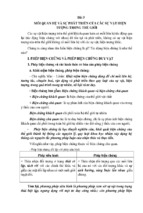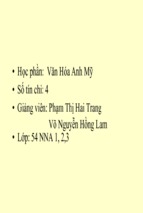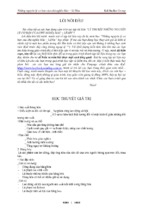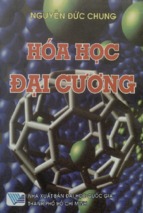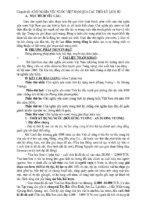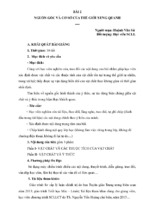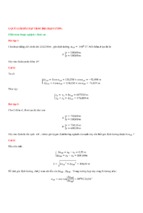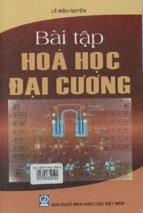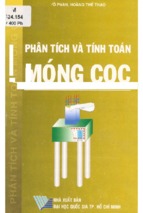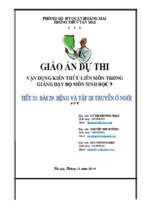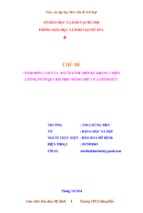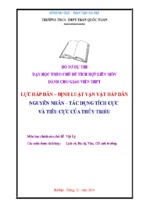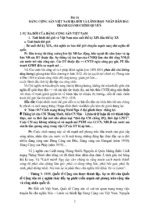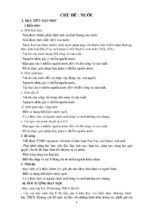Downloaded from ascelibrary.org by RMIT UNIVERSITY LIBRARY on 01/04/19. Copyright ASCE. For personal use only; all rights reserved.
Computing in
Civil Engineering 2017
Sensing, Simulation, and Visualization
Selected Papers from the ASCE International
Workshop on Computing in Civil Engineering 2017
Seattle, Washington
June 25–27, 2017
Edited by Ken-Yu Lin, Ph.D.; Nora El-Gohary, Ph.D.;
and Pingbo Tang, Ph.D., P.E.
Downloaded from ascelibrary.org by RMIT UNIVERSITY LIBRARY on 01/04/19. Copyright ASCE. For personal use only; all rights reserved.
COMPUTING IN CIVIL
ENGINEERING 2017
SENSING, SIMULATION, AND VISUALIZATION
SELECTED PAPERS FROM THE ASCE INTERNATIONAL
WORKSHOP ON COMPUTING IN CIVIL ENGINEERING 2017
June 25–27, 2017
Seattle, Washington
SPONSORED BY
Computing Division
of the American Society of Civil Engineers
EDITED BY
Ken-Yu Lin, Ph.D.
Nora El-Gohary, Ph.D.
Pingbo Tang, Ph.D., P.E.
1801 ALEXANDER BELL DRIVE
RESTON, VIRGINIA 20191–4400
Downloaded from ascelibrary.org by RMIT UNIVERSITY LIBRARY on 01/04/19. Copyright ASCE. For personal use only; all rights reserved.
Published by American Society of Civil Engineers
1801 Alexander Bell Drive
Reston, Virginia, 20191-4382
www.asce.org/publications | ascelibrary.org
Any statements expressed in these materials are those of the individual authors and do not
necessarily represent the views of ASCE, which takes no responsibility for any statement
made herein. No reference made in this publication to any specific method, product, process,
or service constitutes or implies an endorsement, recommendation, or warranty thereof by
ASCE. The materials are for general information only and do not represent a standard of
ASCE, nor are they intended as a reference in purchase specifications, contracts, regulations,
statutes, or any other legal document. ASCE makes no representation or warranty of any
kind, whether express or implied, concerning the accuracy, completeness, suitability, or
utility of any information, apparatus, product, or process discussed in this publication, and
assumes no liability therefor. The information contained in these materials should not be used
without first securing competent advice with respect to its suitability for any general or
specific application. Anyone utilizing such information assumes all liability arising from such
use, including but not limited to infringement of any patent or patents.
ASCE and American Society of Civil Engineers—Registered in U.S. Patent and Trademark
Office.
Photocopies and permissions. Permission to photocopy or reproduce material from ASCE
publications can be requested by sending an e-mail to
[email protected] or by locating a
title in ASCE's Civil Engineering Database (http://cedb.asce.org) or ASCE Library
(http://ascelibrary.org) and using the “Permissions” link.
Errata: Errata, if any, can be found at https://doi.org/10.1061/9780784480830
Copyright © 2017 by the American Society of Civil Engineers.
All Rights Reserved.
ISBN 978-0-7844-8083-0 (PDF)
Manufactured in the United States of America.
Computing in Civil Engineering 2017
iii
Preface
Downloaded from ascelibrary.org by RMIT UNIVERSITY LIBRARY on 01/04/19. Copyright ASCE. For personal use only; all rights reserved.
Welcome to Seattle, the Emerald City in Washington!
The 2017 ASCE International Workshop on Computing in Civil Engineering
(IWCCE) was held in Seattle from June 25-27, 2017. The workshop was hosted by
the University of Washington with sponsorship from ASCE’s Computing Division.
The workshop is the Computing Division’s major meeting event and is held biannually in the United States, with participation from scholars worldwide.
The workshop has a long history of success and serves as a platform for sharing
research innovation as well as valuable lessons. We introduced several pioneering
changes this year, including the inaugural all-stakeholder meeting for the Computing
Division. We had a strong and engaged Technical Committee which provided
rigorous reviews for the abstracts and full papers, with each submission being
reviewed by at least two members of our Technical Committee.
The 2017 workshop, as a standalone event, received more than 300 abstracts, 184 full
papers, and 32 extended abstracts for the poster and demonstration sessions. The
participation from our growing community has set a record and a total of 162 full
papers were accepted and included in the proceedings. Among these papers, Building
Information Modeling and Civil Information Modeling formed the most popular
technical interests while Energy, Sustainability and Resilience topped the list of
application contexts.
We would like to thank the Department of Construction Management at The
University of Washington for its support of the workshop. We are also grateful for the
guidance from the Computing Division’s Executive Committee and the assistance
from ASCE.
We hope that you enjoyed the technical sessions at the workshop and had a
memorable and meaningful IWCCE experience in Seattle this year.
Ken-Yu Lin, Ph.D.
Chair, Organizing Committee, IWCCE 2017
Nora El-Gohary, Ph.D.
Chair, Technical Committee, IWCCE 2017
Pingbo Tang, Ph.D., P.E.
Vice Chair, Organizing Committee, IWCCE 2017
© ASCE
Computing in Civil Engineering 2017
iv
Acknowledgments
Downloaded from ascelibrary.org by RMIT UNIVERSITY LIBRARY on 01/04/19. Copyright ASCE. For personal use only; all rights reserved.
Special thanks are due to the following individuals at the University of Washington
for their continuous and tireless support throughout the organization of the workshop:
Name
Julie Angeley
Mark Baratta
Brian Vogt
Zhenyu Zhang
Title
IWCCE Local Administrator
IWCCE Local IT Lead
IWCCE Local Web Consultant
IWCCE Secretary
A sincere appreciation goes to the Microsoft Corporation for providing the editors
free access to Microsoft’s Academic Conference Management Service and for
customizing the online platform for the workshop.
The editors would also like to thank the following Technical Committee members for
their assistance and effort with the paper review and selection process:
Name
Abbas Rashidi
Albert Chen
Ali Mostafavi
Amin Hammad
Amir Behzadan
Andre Barbosa
Andre Borrmann
Atefeh Mohammadpour
Auroop R. Ganguly
Baabak Ashuri
Behzad Esmaeili
Bon-Gang Hwang
Brenda McCabe
Burcin Becerik
Carl Haas
Carlos Caldas
Carol Menassa
Changbum Ahn
Chao Wang
Chen Feng
© ASCE
Institution
Georgia Southern University
National Taiwan University
Florida International University
Concordia University
Missouri State University
Oregon State University
The Technical University of Munich
Indiana University-Purdue University Fort Wayne
Northeastern University (United States)
Georgia Institute of Technology
University of Nebraska-Lincoln
National University of Singapore
University of Toronto
University of Southern California
University of Waterloo
University of Texas at Austin
University of Michigan
University of Nebraska-Lincoln
Louisiana State University
Mitsubishi Electric Research Laboratories
Computing in Civil Engineering 2017
Downloaded from ascelibrary.org by RMIT UNIVERSITY LIBRARY on 01/04/19. Copyright ASCE. For personal use only; all rights reserved.
Chien-Cheng Chou
Chimay Anumba
Christian Koch
David Lattanzi
Dong Zhao
Dulcy Abraham
Ebrahim Karan
Eduardo Santos
Esin Ergen
Fadi Castronovo
Farrokh Jazizadeh
Fei Dai
Feng Li
Fernanda Leite
Frank Boukamp
Frederic Bosche
Guangbin Wang
Hanbin Luo
Hubo Cai
Ian Smith
Ioannis Brilakis
Islam El-adaway
Ivan Mutis
Jack Cheng
Jiansong Zhang
Jiayu Chen
Jie gong
Jing Du
Jinyue Zhang
John Messner
John Taylor
Jun Yang
Justin Ker-Wei Yeoh
Koji Makanae
Lu Zhang
Lucio Soibelman
Mani Golparvar-Fard
Mario Berges
Menghan Tsai
Michael Olsen
Ming Lu
© ASCE
v
National Central University (Taiwan)
University of Florida
University of Nottingham
George Mason University
Michigan State University
Purdue University
Millersville University
University of Sao Paulo
Istanbul Technical University
California State University East Bay
Virginia Tech
West Virginia University
Research Institute of Highway (China)
University of Texas at Austin
Royal Melbourne Institute of Technology
Heriot-Watt University
Tongji University
Huazhong University of Science and Technology
Purdue University
Ecole Polytechnique Federale (Switzerland)
Cambridge University
University of Tennessee
Illinois Institute of Technology
Hong Kong University of Science and Technology
Western Michigan University
City University of Hong Kong
Rutgers University
Texas A&M University
Tianjin University
Penn State University
Georgia Tech
Northwestern Polytechnical University (China)
National University of Singapore
Miyagi University
Florida International University
University of Southern California
University of Illinois at Urbana-Champaign
Carnegie Mellon University
National Taiwan University
Oregon State University
University of Alberta
Computing in Civil Engineering 2017
Downloaded from ascelibrary.org by RMIT UNIVERSITY LIBRARY on 01/04/19. Copyright ASCE. For personal use only; all rights reserved.
Mounir El Asmar
Nai-Wen Chi
Nan Li
Nipesh Pradhananga
Nobuyoshi Yabuki
Omar El-Anwar
Oswald Chong
Paul Goodrum
Pin-Chao Liao
Ray Issa
Renate Fruchter
Ren-Jye Dzeng
Reza Akhavian
Rishee Jain
Robert Amor
Rucheng Xiao
Rui Liu
Saiedeh Razavi
Sanghoon Lee
SangHyun Lee
SangUk Han
Semiha Ergan
Seokho Chi
Shang-Hsien Hsieh
Sheryl Staub-French
Steven Ayer
Takashi Michikawa
Tamer El-Diraby
Timo Hartmann
Walid Tizani
Wen Xiong
Xiangyu Wang
Xianzhong Zhao
Xiaowei Luo
Xiaolong Xue
Xuesong Liu
Xuesong Shen
Yelda Turkan
Yimin Zhu
Ying Zhou
Yong Cho
© ASCE
vi
Arizona State University
National Taiwan University
Tsinghua University
Florida International University
Osaka University
Cairo University
Arizona State University
University of Colorado at Boulder
Tsinghua University
University of Florida
Stanford University
National Chiao-Tung University
California State University East Bay
Stanford University
University of Auckland
Tongji University
University of Florida
McMaster University
University of Hong Kong
University of Michigan
University of Alberta
New York University
Seoul National University
National Taiwan University
University of British Columbia
Arizona State University
RIKEN
University of Toronto
Technical University of Berlin
University of Nottingham
Southeast University
Curtin University
Tongji University
City University of Hong Kong
Harbin Institute of Technology
Carnegie Mellon University
University of New South Wales
Oregon State University
Louisiana State University
Huazhong University of Science and Technology
Georgia Institute of Technology
Computing in Civil Engineering 2017
Downloaded from ascelibrary.org by RMIT UNIVERSITY LIBRARY on 01/04/19. Copyright ASCE. For personal use only; all rights reserved.
Youngjib Ham
Yunfeng Chen
Zhenhua Zhu
Zheng Yang
Zhiliang Ma
vii
Florida International University
Georgia Southern University
Concordia University
Stanford University
Tsinghua University
Finally, the editors would also like to thank the following Poster and Demonstration
Organization Committee members for their help with the related review process:
Name
Cheng Zhang
Hamid Abdirad
Jiawei Chen
Kadir Amasyali
Kaijian Liu
Lufan Wang
Luming Shang
Vamsi Sai Kalasapudi
Xuan Lv
Zhenyu Zhang
© ASCE
Institution
Arizona State University
University of Washington
Arizona State University
University of Illinois at Urbana-Champaign
University of Illinois at Urbana-Champaign
University of Illinois at Urbana-Champaign
University of Washington
Arizona State University
University of Illinois at Urbana-Champaign
University of Washington
Computing in Civil Engineering 2017
viii
Contents
Downloaded from ascelibrary.org by RMIT UNIVERSITY LIBRARY on 01/04/19. Copyright ASCE. For personal use only; all rights reserved.
Design Management and Collaboration
Simultaneous Data Exchange between BIM and VR for Collaborative
Decision Making.......................................................................................................... 1
Jing Du, Zhengbo Zou, Yangming Shi, and Dong Zhao
The Need for Taxonomies in the Ontological Approach for
Interoperability of Heterogeneous Information Models ......................................... 9
Aaron M. Costin, Charles Eastman, and Raja R. A. Issa
Hybridizing Topology Optimization and Evolutionary
Computation to Support Computer-Aided Engineering Design .......................... 18
Achyuthan Jootoo and David Lattanzi
Education
When Is a Construction Educational Serious Game Too Serious? Striking
a Balance between Engagement and Learning ...................................................... 26
Fadi Castronovo, Robert M. Leicht, and John I. Messner
Learning Advanced Decision-Making Techniques and Technologies
through a Collaborative Project .............................................................................. 35
Seokyon Hwang and Mahdi Safa
ICT-Enabled Cross-Cultural Education in Sustainable Urbanization................ 43
Nan Li, Deland Chan, Kevin Hsu, Zhiyong Fu, and Quan Mao
An Augmented Reality Environment for Students’ Learning of Steel
Connection Behavior ................................................................................................ 51
Hazar Nicholas Dib and Nicoletta Adamo
A New Learning Model, Guided Soft Classroom, Integrating MOOCs into
Conventional Classrooms for University Students ................................................ 59
Yi-Fen Li, Ching-Mei Tseng, and Shih-Chung Kang
Hybrid Real/Virtual Simulation in an Engineering Laboratory Course ............ 68
Yupeng Luo and Jeevjyot Chhabda
© ASCE
Computing in Civil Engineering 2017
ix
Intelligent Sensing and Monitoring
Automated Monitoring of the Utilization Rate of Onsite Construction
Equipment ................................................................................................................. 74
Xiaoning Ren, Zhenhua Zhu, Chantale Germain, Roger Belair, and Zhi Chen
Downloaded from ascelibrary.org by RMIT UNIVERSITY LIBRARY on 01/04/19. Copyright ASCE. For personal use only; all rights reserved.
A Personalized HVAC Control Smartphone Application Framework for
Improved Human Health and Well-Being ............................................................. 82
Da Li, Carol C. Menassa, and Vineet R. Kamat
Automated Change Diagnosis of Single-Column-Pier Bridges Based on 3D
Imagery Data ............................................................................................................. 91
Ying Shi, Wen Xiong, Vamsisai Kalasapudi, Chao Geng, Cheng Zhang,
and Pingbo Tang
Feasibility of Field Measurement of Construction Workers’ Valence
Using a Wearable EEG Device ................................................................................ 99
Houtan Jebelli, Sungjoo Hwang, and SangHyun Lee
Using Photometric Stereo Method in Evaluating the Volume of Potholes ........ 107
Peng-Yuan Chen and Shih-Chung Kang
Comparison of Traditional Laser Scanning and Mobile Lidar
Technology for AECO Applications ..................................................................... 113
Nathan Blinn and Raja R. A. Issa
Mobile Asset Tracking for Dynamic 3D Crane Workspace Generation in
Real Time ................................................................................................................. 122
Jingdao Chen, Yihai Fang, and Yong K. Cho
A Smart Construction Object (SCO)-Enabled Proactive Data Management
System for Construction Equipment Management ............................................. 130
Yuhan Niu, Weisheng Lu, Diandian Liu, Ke Chen, and Fan Xue
Potential Use of Cyber-Physical Systems (CPS) for Planning and
Operation of Mobile Cranes on Construction Sites............................................. 139
C. Kan, C. J. Anumba, and J. I. Messner
Proactive Construction Project Controls via Predictive Visual Data
Analytics .................................................................................................................. 147
Jacob J. Lin and Mani Golparvar-Fard
A Compact and Versatile Wireless Sensor Prototype for Affordable
Intelligent Sensing and Monitoring in Smart Buildings ..................................... 155
Q. Huang, C. Mao, and Y. Chen
© ASCE
Computing in Civil Engineering 2017
x
Vision-Based Activity Analysis Framework Considering Interactive
Operation of Construction Equipment ................................................................. 162
Jinwoo Kim, Seokho Chi, and Bon-Gang Hwang
Downloaded from ascelibrary.org by RMIT UNIVERSITY LIBRARY on 01/04/19. Copyright ASCE. For personal use only; all rights reserved.
Perspective-Based Image-to-BIM Alignment for Automated Visual Data
Collection and Construction Performance Monitoring ...................................... 171
Khashayar Asadi Boroujeni and Kevin Han
Towards Light Intensity Assisted Non-Intrusive Electricity
Disaggregation......................................................................................................... 179
Jue Wang and Farrokh Jazizadeh
Smart Tracking of Highway Construction Projects ............................................ 187
Nazila Roofigari Esfahan, Shuming Du, Chimay Anumba, and Saiedeh Razavi
On the Scalability of an LED-Based Indoor Positioning System ....................... 196
Milad Afzalan and Farrokh Jazizadeh
Modeling and Simulation
Modeling the Effect of a Socio-Psychological Process on Construction
Workers’ Safety Behavior ...................................................................................... 205
Byungjoo Choi and SangHyun Lee
Uncertainty Analysis for Thermal Comfort Evaluation in Naturally
Ventilated Buildings ............................................................................................... 213
Jianli Chen, Godfried Augenbroe, Qinpeng Wang, and Xinyi Song
A Basic Study on the Evacuation Characteristics of High-Rise Building
through Comparing Evacuation Experiment and Simulations—A Case
Study in Korea ........................................................................................................ 221
Jaehong Kim, Yongwei Shan, Junho Choi, Phil Lewis, and Wonhwa Hong
Imaging-to-Simulation Framework for Improving Disaster Preparedness
of Construction Projects and Neighboring Communities ................................... 230
Youngjib Ham, Seung Jae Lee, and Arindam Gan Chowdhury
Formulating the Minimum Network Clearance Time for Evacuation
Problems .................................................................................................................. 238
Yu-Ting Hsu and Hsiang-Yin Chen
Planning Rough-Grading Projects: CAT Handbook vs. RS Means .................. 246
Chaojue Yi and Ming Lu
© ASCE
Computing in Civil Engineering 2017
xi
Integrating Activities Risk and Traffic Microsimulation Data for Temporal
Risk Assessment in Construction Work Zones: A Proof of Concept ................. 254
Bharathwaj Sankaran, Jojo France-Mensah, and William J. O’Brien
Downloaded from ascelibrary.org by RMIT UNIVERSITY LIBRARY on 01/04/19. Copyright ASCE. For personal use only; all rights reserved.
Building Accessibility Code Compliance Verification Using Game
Simulations in Virtual Reality ............................................................................... 262
Abdulaziz Alghamdi, Mohammed Sulaiman, Abdullah Alghamdi,
Mohammed Alhosan, Majid Mastali, and Jiansong Zhang
Development of Real-Time Indoor Temperature Distribution Simulation:
A Pilot Study ........................................................................................................... 271
Chanachok Chokwitthaya, Yimin Zhu, Suraj Talele, Caleb Traylor, and Yong Tao
Stochastic Forecasting of Unknown Future Project Streams for Strategic
Portfolio Planning ................................................................................................... 280
Alireza Shojaei and Ian Flood
Agent-Based Simulation Framework for Supply Chain Management of
Large-Scale Construction Projects ....................................................................... 289
Minhyuk Jung
Multi-Asset Optimization of Roadways Asset Maintenance .............................. 297
Omidreza Shoghli and Jesus M. de la Garza
Investigating the Impact of Human Risk Taking Tendency on the
Likelihood of Struck-By Accidents in Construction Using Agent-Based
Simulation ................................................................................................................ 306
Cenfei Sun, Seungjun Ahn, and Changbum Ahn
Implementation Verification and Validation of 3D Structural Elements
in a Numerical Tool for Nonlinear SSI Seismic Analysis .................................... 315
Floriana Petrone, Jenna Wong, David McCallen, and Frank McKenna
Robust Outlier Detection and Normal Estimation in Noisy Infrastructure
3D Point Clouds ...................................................................................................... 323
Ali Khaloo and David Lattanzi
Comparison Basis of Building Information Modeling Workflows for
Energy Analysis ...................................................................................................... 332
Pelin Gultekin-Bicer, Issa J. Ramaji, and Chimay J. Anumba
Robotics and Automation
Automatic Barcode Extraction for Efficient Large-Scale Inventory
Management ............................................................................................................ 340
Lichao Xu, Vineet R. Kamat, and Carol C. Menassa
© ASCE
Computing in Civil Engineering 2017
xii
Roles, Benefits, and Challenges of Using UAVs for Indoor Smart
Construction Applications ..................................................................................... 349
B. Y. McCabe, H. Hamledari, A. Shahi, P. Zangeneh, and E. Rezazadeh Azar
Downloaded from ascelibrary.org by RMIT UNIVERSITY LIBRARY on 01/04/19. Copyright ASCE. For personal use only; all rights reserved.
Application of Assistive Wearable Robotics to Alleviate Construction
Workforce Shortage: Challenges and Opportunities .......................................... 358
Chao Wang, Laura Ikuma, Jan Hondzinski, and Marcio de Queiroz
Virtual Reality and Augmented Reality
High-Fidelity Visualization of Fire following Earthquake ................................. 366
Xinzheng Lu, Xiang Zeng, Zhen Xu, and Qingle Cheng
Quantifying Human Experience in Interior Architectural Spaces .................... 373
A. Radwan and S. Ergan
Application of Immersive Virtual Environment (IVE) in Occupant
Energy-Use Behavior Studies Using Physiological Responses............................ 381
Sanaz Saeidi, Adam Lowe, Neil Johannsen, and Yimin Zhu
The Impact of Lighting Simulation Discrepancies on Human Visual
Perception and Energy Behavior Simulations in Immersive Virtual
Environment ............................................................................................................ 390
Chanachok Chokwitthaya, Sanaz Saeidi, Yimin Zhu, and Robert Kooima
Interactive Highway Construction Simulation Using Game
Engine and Virtual Reality for Education and Training Purpose ..................... 399
Majid Mastli and Jiansong Zhang
Development of Immersive Personalized Training Environment for
Construction Workers ............................................................................................ 407
Idris Jeelani, Kevin Han, and Alex Albert
© ASCE
Computing in Civil Engineering 2017
Simultaneous Data Exchange between BIM and VR for Collaborative Decision Making
Jing Du, Ph.D.1; Zhengbo Zou2; Yangming Shi3; and Dong Zhao, Ph.D.4
1
Downloaded from ascelibrary.org by RMIT UNIVERSITY LIBRARY on 01/04/19. Copyright ASCE. For personal use only; all rights reserved.
Assistant Professor, Dept. of Construction Science, Texas A&M Univ., College Station,
TX 77843 (corresponding author). E-mail:
[email protected]
2
Ph.D. Student, Dept. of Construction Science, Texas A&M Univ., College Station, TX
77843. E-mail:
[email protected]
3
Ph.D. Student, Dept. of Construction Science, Texas A&M Univ., College Station, TX
77843. E-mail:
[email protected]
4
Assistant Professor, School of Planning, Design and Construction, Michigan State Univ.,
East Lansing, MI 48824. E-mail:
[email protected]
Abstract
Virtual reality (VR) has attracted increasing attention of the architecture, engineering,
construction and facility management (AEC/FM) industry in recent years. VR has the potential
to improve workflow efficiency through enhanced common understanding. However, the current
workflow, which usually contains manually converting design files to VR application, is quite
cumbersome and usually, inefficient. The lack of automated and efficient data exchange
approach and protocol could potentially cause designers and other users to abandon VR after the
first few design cycles. In this paper, we introduce a BIM-VR real-time data exchange system.
The system is based on an innovative Cloud-based BIM metadata interpretation and
communication method. With the function of allowing users to update BIM model changes in
VR headsets automatically and simultaneously, the system achieves high user stickiness and
reduces the complexity of workflow. We tested the system in a variety of design change
scenarios including changing object dimensions and changing object types. Results confirmed
the usability and efficiency.
Keywords: BIM, Virtual reality, Information latency, Metadata, Cloud computing.
INTRODUCTION & LITERATURE REVIEW
BIM has gained its popularity in the AEC/FM industry in the past decades (Bernstein et al.
2012). With increasing number of use cases during design, construction and operation phases,
BIM shows its potential in the whole life cycle management of a building asset (Grilo and
Jardim-Goncalves 2010). BIM could be used as a 3D visualization platform for built or not yet
built buildings (Shiratuddin and Thabet 2011). The ability of demonstrating an intuitive model
among different stakeholders, especially those without a background in the AEC industry, has
great potential of facilitating the communication and bring up awareness of problems during
design phases (Shiratuddin and Thabet 2011).
© ASCE
1
Downloaded from ascelibrary.org by RMIT UNIVERSITY LIBRARY on 01/04/19. Copyright ASCE. For personal use only; all rights reserved.
Computing in Civil Engineering 2017
The combination of BIM and game engines provides intuitive and realistic 3D models for better
human interaction with the building due to the powerful 3D and physics engines residing in the
modern game engines (Mól et al. 2008). Building visualization could even be achieved in
unprecedented ways, such as, creating highly credible surroundings, visualizing sensor data
intuitively and creating lifelike avatars for user interactions (Park and Kim 2013; Rüppel and
Schatz 2011). Evidence shows that interactive building models improved by game engines has
the benefit of enhancing user experience and user communication during various phases in a
building project (Yan et al. 2011).
With the rapid improvement in technology industry, the usage of virtual reality (VR) is finding
its way in AEC/FM industry. Integrated with game engine and BIM, VR applications are
developed for facilitating design, visualization, management and communication . The
participation of technology giants such as Google, Facebook and Microsoft, only helps to bring
down the cost of VR technology, and spread VR headsets to more users around the globe.
Researches on various VR technology use cases in AEC industry have been conducted, and
showed positive results on improving the quality of the entire AEC/FM industry workflows
(Fernandes et al. 2006; Kasireddy et al. 2016; Messner et al. 2003; Park and Kim 2013;
Rekapalli and Martinez 2007; Zielinski et al. 2015).
However, with the complexity of the game engine development, VR integration and still under
power VR hardware, users in AEC industry could find various problems in the BIM to VR
workflow. For example, missing information, slow response and difficulties when integrating
building information more than just geometry (Kasireddy et al. 2016). Therefore, this research
aims to develop a framework to effectively exchange information between VR application and
BIM design software. We will test the framework by experimenting information exchange in a
toy example first, then examine it in a real-world project.
BVRS: BIM-VR REAL-TIME SYNCHRONIZATION
Given the great potentials of BIM-VR applications in the AEC/FM areas, there is a pressing need
to address the data synchronization issue between BIM and VR databases. We propose a BIMVR real-time synchronization system, or BVRS to tackle this issue. BVRS builds upon the
metadata of BIM databases, and establishes an innovative Cloud-based workflow to automate the
real-time transfer of metadata between BIM and VR game engine. The remainder of this section
will introduce the details of BVRS.
Overall Architecture of BVRS
As illustrated in Fig. 1, BVRS consists of four major components: BIM software, Cloud servers
and database, game engine, and VR applications. BIM provides the project model. In our pilot
study, we use Revit as the BIM platform so that architects and engineers can work in their most
comfortable environment. Cloud servers and database provide an online calculating and storing
space. Real time updates can be achieved by pushing and retrieving information from and to
servers. Functions like building walk around, BIM information extraction, and model refreshing
can be developed within the game engine development kit, for example, Unity3D. VR
applications are the user end of BVRS system. Users interact with building models using a
© ASCE
2
Computing in Civil Engineering 2017
3
controller or simply by using “gaze to select”. To achieve the functions mentioned in BVRS
system, three main steps are needed: gather metadata from BIM; transfer metadata via cloud
server; develop in game engine.
Revit
Game Engine
Metadata
VR HeadSets
Data
•
•
•
•
Creator
Element ID
Cost Code
File Size...
•
•
Object Data
Cost Data...
•
•
•
•
Object Data
IFC
Geometry
Material
Manufacture
Model...
Logic (Controller)
Oculus Rift
Start
YES
Upload&Transfer
Request
Response
Cloud Database & Server
Cloud Database
Element ID
Cloud Server
ElementID > maxID
PropertyID = 0
ElementID += 1
Publish
YES
Proxy Server
Composed Response
NO
ObjectData[PropertyID]
Change
API
NO
YES
Destroy Object[ElementID]
Protocal
Application
Server
Request
Create Object[ElementID]
with updated property
Response
}
……
……
{
"Position": [
3.00,
2.00,
1.00
],
"Material": "Steel",
"Manufacture": Best Steel Co.,
"Model": null,
}
Web
Browsers
Standalone
Apps
PropertyID > maxID
{
000000
……
……
999999
Google
Cardboard
NO
Object Data
"Position": [
1.00,
2.00,
3.00
],
"Material": "Concrete",
"Manufacture": Best Concrete Co.,
"Model": null,
Samsung
Gear VR
ElementID = 0
API
Data Request
Downloaded from ascelibrary.org by RMIT UNIVERSITY LIBRARY on 01/04/19. Copyright ASCE. For personal use only; all rights reserved.
Element ID
PropertyID += 1
Fig.1 Architecture of BVRS
Step 1: Gather Metadata in BIM
First, metadata from BIM models has to be collected and preserved. To match individual objects
from BIM software, such as Revit, to their metadata, identifications (IDs) must be deployed,
such as Global Unique Identifier (GUID) (Jeong et al. 2009), Unique ID (Kull 2012) and
Element ID (Liu et al. 2015). The IDs are used in two parts of the BVRS system. First, IDs are
used to match objects to objects’ properties, such as material, dimension and manufacture.
Second, IDs are used to match objects in Revit to corresponding objects on the cloud database
and the corresponding objects in game engines.
ID is an important part of BVRS system. It simply plays a role as a key to all objects
information. For example, during the process of transferring projects model from Revit to Unity
© ASCE
Computing in Civil Engineering 2017
Downloaded from ascelibrary.org by RMIT UNIVERSITY LIBRARY on 01/04/19. Copyright ASCE. For personal use only; all rights reserved.
3D, which is a commonly used process (Dalton and Parfitt 2013; Du et al. 2016), the Element
IDs are preserved, and later can be found as part of the name of corresponding objects in game
engines. For example, a cabinet, after transferred into a game engine, might have a name like
“Base Cabinet-Double Door & 2 Drawer 33 [974236]”. The six-digit number, “[974236]”, is the
Element ID of this cabinet.
Step 2: Transfer and Store Metadata via a Cloud Server
Real-time updates require Revit constantly sending updated information to a shared database,
such as a cloud server. Once the object changed and stored locally, such as saved in a Revit
project, updated information should be pushed to the cloud database. The updated information
then would be received and stored in the cloud database.
The basic functions of the cloud server and database include: listening to requests; judging
validity of requests; identifying the changed objects; and committing the updated information.
The web server in BVRS monitors user requests, such as http requests from a Revit plugin. Once
receiving a request, the web server determines if the request is valid. If so, send the request to the
application server. If not, discard the request and continue to listen to other requests. Application
server then examine the requested ID. If the ID was valid, further examine the requested property
of the object with the correct ID. If the property was also valid, the database would update
properties according to the user’s request. The cloud server and database simply only keep
records of the projects’ information, so that VR applications can pull the stored information and
adjust their models accordingly.
Step 3: Develop in Game Engine
To build a VR application with real-time BIM data updating function, four major parts are
developed, including: model transfer and refinement; user interface design; cloud server
connections and player functions development.
First, model transfer is to bring the developed model from BIM software to game engine for
further development. One major challenge is model refinement, which includes enriching the
model and reducing lagging at run time. Enriching the model can be done in the game engine by
creating new materials and attaching them to the corresponding objects. Note that newly created
materials should have the same names as their old counterparts, so that the objects’ property
information remains intact. Reduce lagging at run time can be achieved by utilizing the same
texture for objects with same materials and deploy built-in improvement functions, such as
Occlusion Culling in Unity3D (Unity Documentation 2016).
Second, user interface of the VR application should be developed according to the VR device.
For example, if the VR device is a Google Cardboard, due to the lack of buttons of that platform,
developers should keep in mind that a proper user interface might include a large amount of
“gazing to select”. If the VR device is Oculus Rift or similar computer powered VR devices, user
interface and interactions can be much more complex. For example, mouse and arrow keys on
keyboard can be used as navigation tools. Other input devices can also be attached to a computer,
such as a Bluetooth controller. With a Bluetooth controller, user interactions can be developed by
© ASCE
4
Computing in Civil Engineering 2017
5
Downloaded from ascelibrary.org by RMIT UNIVERSITY LIBRARY on 01/04/19. Copyright ASCE. For personal use only; all rights reserved.
mimickin
ng commonlly seen gamees on gamin
ng consoles. If the VR deevice is a high-end dediicated
VR head
dset like HTC
C Vive, or Oculus
O
Rift with Touchh, the user innterface desiign should uutilize
controllers provided by those platforms. Fo
or example, HTC Vive controller ccan be usedd as a
handle to
o pick up and
d relocate ob
bjects in VR scenes.
Third, BVRS is heaavily relied on the cloud server andd database. The VR appplication crreates
requests for the cloud
d server everry few secon
nds, and receeives updateed informatioon from the ccloud
ormation, su
uch as objecct’s propertiies, is indeeed changed,, VR appliccation
database.. If the info
should find
f
the updated objecct by ID, then
t
update the properrties accordding to the new
informatiion.
Finally, users of VR applicatio
ons control the movem
ment of their avatars tthrough a pplayer
controller. Basic fun
nctions of a player
p
contro
oller shouldd include: waalking in sceene; moving head
and turniing body; po
ointing at objjects interest users and uupdating thee model in reeal time. Waalking
and turniing can be acccomplished
d by reading the user inpuut from inpuut devices, liike a joystickk of a
controller or the arro
ow keys on keyboards.
k
Pointing
P
andd updating ccan be triggeered by dediicated
buttons on
o keyboardss or controlleers.
TEST CASE
Overview
w
We impllemented BV
VRS to an existing bu
uilding modeel, Francis Hall, home of Construuction
Science Department
D
at Texas A&
&M University. It shouuld be noted that due to the large siize of
the Fran
ncis Hall BIM
B
model, although all model ccomponentss are presennted in thee VR
environm
ment, only paart of the mo
odel is synch
hronized on oour Cloud seerver.
Scenario
o 1: Changin
ng Object Tyype
In the fiirst experim
ment scenario
o, we tested
d if BVRS can update object typee changes inn VR
headsets in real timee. One user changed thee type of a cchair in Revit, as shownn in Fig.2 (aa) and
(b). Otheer users werre able to th
he see the ch
hange in theeir Oculus R
Rift DK2 heeadsets. Nettwork
delays may
m be experienced by the users. Due
D to the ddifficulty off measuring an everchannging
network speed, the network delay
y was not measured in thhis experimeent.
(a) Th
he chair type before chan
nge in Revit
© ASCE
(b) T
The chair typpe after channge in Revit
Downloaded from ascelibrary.org by RMIT UNIVERSITY LIBRARY on 01/04/19. Copyright ASCE. For personal use only; all rights reserved.
Computing in Civil Engineering 2017
(c) The view
v
of the chair
c
in VR before
b
chang
ge
6
(d) Thee view of thee chair in VR
R after changge
Fig
g. 2 Synchron
nizing objecct type changges of a chairr via BVRS
Scenario
o 2: Changin
ng Object Diimensions
Our seco
ond experiment scenario
o tested dimeension channges. As illustrated in Fiig.3 (a), onee user
can chan
nge the heigh
ht of a cabineet from 2’6”” to 3’6” in R
Revit. Meanw
while, other users can seee the
changes in
i Oculus Riift headsets, as illustrated in Fig.3 (cc) and (d).
(e) Abou
ut to change the height of
o a cabinet in
i
Revit
(f) Thhe height of the cabinet w
was changedd
(g) Th
he view of th
he cabinet in VR before
change
(h) T
The view of the cabinet in VR after
change
Fig. 3 Synchronizing dimenssional changes of a cabinnet via BVR
RS
© ASCE
Computing in Civil Engineering 2017
Downloaded from ascelibrary.org by RMIT UNIVERSITY LIBRARY on 01/04/19. Copyright ASCE. For personal use only; all rights reserved.
DISCUSSION AND CONCLUSIONS
In this paper, we introduced a real-time BIM-VR data synchronization system called BVRS
(BIM-VR Real-time Synchronization) that updates BIM design changes in VR headsets
automatically and simultaneously. BVRS builds on a metadata interpretation and communication
protocol with a cross-platform Cloud infrastructure. Our prototype version of BVRS includes a
Revit plugin that gathers BIM metadata on a regular basis, a Cloud server that organizes and
transfers metadata based on the objects’ element ID stored in the Revit file, and a game engine
that displays changes in VR headsets such as Oculus Rift DK2. BVRS also supports multiple
users in the same model for enhanced interpersonal communication. Our test case shows that
real-time synchronization of BIM data in VR devices is possible for different scenarios.
Our future research agenda will focus on improving BVRS efficiency for complex models, such
as those with many MEP objects. In our test case (not shown in this paper), we found that if a
BIM model contains a large number of interdependent objects, the speed of BIM-VR data
synchronization is affected. An explanation is that BVRS needs to dynamically monitor changes
of every object in a BIM model. When the number of BIM objects are too large, the
search/scanning process will consume much computing resource and eventually slows down the
synchronization. The use of IDs as search key seems not be the most efficient approach. Other
tree-based search algorithms (Kanal and Kumar 2012) will be examined to improve search
efficiency. Another direction of this research is to evaluate if BVRS can help improve AEC/FM
workflow efficiency through an enhanced common understanding among key parties. We will
perform human-subject experiments to compare the productivity and quality of design change
coordination meetings between teams using BVRS and those using conventional approach.
Reference
Bernstein, H. M., Jones, S. A., Russo, M., Laquidara-Carr, D., Taylor, W., Ramos, J., Healy, M.,
Lorenz, A., Fujishima, H., and Fitch, E. (2012). "The business value of BIM in North
America." Bedford: McGraw-Hill.
Dalton, B., and Parfitt, M. (2013). "Immersive visualization of building information models."
Design Innovation Research Center Working Paper, 6(1.0).
Du, J., Shi, Y., Mei, C., Quarles, J., and Yan, W. "Communication by Interaction: A Multiplayer
VR Environment for Building Walkthrough." Proc., ASCE Construction Research
Congress (CRC) 2016, ASCE.
Fernandes, K. J., Raja, V., White, A., and Tsinopoulos, C.-D. (2006). "Adoption of virtual reality
within construction processes: a factor analysis approach." Technovation, 26(1), 111-120.
Grilo, A., and Jardim-Goncalves, R. (2010). "Value proposition on interoperability of BIM and
collaborative working environments." Automation in Construction, 19(5), 522-530.
Jeong, Y.-S., Eastman, C., Sacks, R., and Kaner, I. (2009). "Benchmark tests for BIM data
exchanges of precast concrete." Automation in construction, 18(4), 469-484.
Kanal, L., and Kumar, V. (2012). Search in artificial intelligence, Springer Science & Business
Media.
Kasireddy, V., Zou, Z., Akinci, B., and Rosenberry, J. "Evaluation and Comparison of Different
Virtual Reality Environments towards Supporting Tasks Done on a Virtual Construction
Site." Proc., Construction Research Congress 2016, 2371-2381.
© ASCE
7

